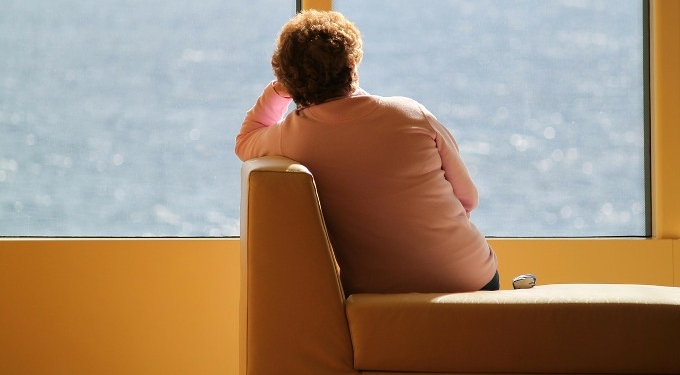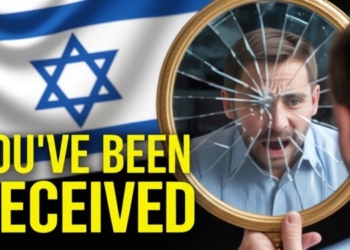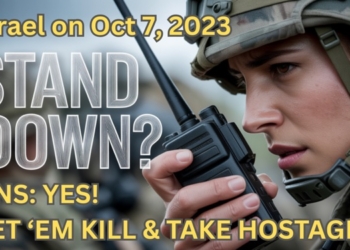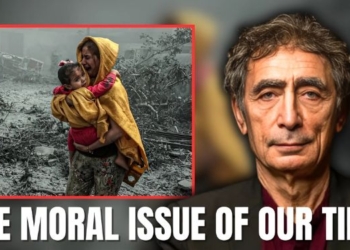
By Jill Suttie | Greater Good Magazine
When Dr. Vivek Murthy served as the U.S. Surgeon General during part of the Obama and Trump administrations, he became increasingly concerned at how many people across the country were experiencing loneliness. Even in the hubbub of populated cities, many didn’t have close personal relationships, a supportive group of friends, or a sense of belonging within a community, all of which are central to our well-being.
In his new book, Together: The Healing Power of Human Connection in a Sometimes Lonely World, Murthy synthesizes the research on loneliness, giving us a primer on what it is and how it hurts our physical and mental health and decreases our longevity. He also dispenses advice on how to build better relationships and create a more relationship-centered society.
I spoke to him about his book and its implications, both generally and during this time of sheltering-in-place, where social connection is even harder to come by.
Jill Suttie: Research shows that we tend to underestimate other people’s loneliness compared to our own. Why do you think that is, and how does it affect loneliness?

1Vivek Murthy: I think part of the reason we underestimate the loneliness of people is that it’s often hidden. Loneliness, unfortunately, carries a stigma with it. People who feel lonely often are ashamed to admit it. They think it’s equivalent to admitting that they are not likable or that they’re socially insufficient in some way.
It can be hard to admit loneliness, even to a spouse. We can be at a party, surrounded by people, and still feel lonely. We often look around us and see people who are seemingly leading happy lives—certainly on their social media feeds—and we assume that we’re the only ones who are struggling.
Also, loneliness is hard to see because it doesn’t always look like the stereotype of a person sitting alone in a corner. Loneliness can actually manifest in different ways with different people. It can look like irritability and anger, fatigue, reclusiveness, depression, or anxiety. We may chalk these up to other conditions or concerns, but many of these states have their roots (at least partially) in loneliness.
JS: You write that a third of Americans over 45 years old consider themselves to be lonely. Is that pattern common around the world or more unique to the U.S.?
VM: Many societies that would consider themselves part of modern-day culture are finding that they have high levels of loneliness among older populations. There are several reasons why that’s happening. One is that, as people get older, sometimes they experience greater illness, which can limit their ability to physically go out and see others. Second, as people get older, they often encounter difficulties with hearing and vision, and not being able to hear well, in particular, can be a significant barrier to engaging with others.
It’s important to note that in the United States health care system, we tend to focus on physical illness and don’t focus enough on mental health or on vision, dental care, or hearing—areas where we really need to support people. You see that reflected in reimbursement policies; it’s still expensive for many older adults to get hearing aids, even if they have coverage from Medicare.
Some of these practical barriers to connecting with others become significant as we get older, but there’s also a cultural element here. In the United States and other modern societies, there is an extraordinary value that’s placed on youth, and as people get older, they often feel less useful to society or less valued simply because they’re not young anymore. If we feel we’re just a burden on other people, that can impact how we engage with other people and how fulfilling our interactions are.
JS: You write that we need three levels of connection—intimate (partner or spouse), relational (circle of friends), and collective (community)—to avoid loneliness. Why is community important?
VM: As human beings, we evolved to need each other and to be part of a community. There’s something deeply ingrained in us about wanting to be a part of a shared identity. So, we find ourselves gravitating toward various affinity groups based on shared religious beliefs or shared race and ethnicity or shared nationality or shared interest, and we derive a lot of meaning and value from a common identity with others.

One thing that COVID-19 is highlighting for so many people experiencing physical distancing is not only how important relationships with family and friends are, but also how meaningful our interactions with neighbors, relatives, and strangers in our communities are. How nice it would be to just sit in a coffee shop and work while being surrounded by strangers or to go and shoot hoops on the basketball court with other people! There is a sense of connection we experience, even with strangers, that’s very valuable, that makes you feel like you’re part of something bigger.
When you understand that we need intimate connection, good friends, and community, you start to recognize why somebody can be in a deeply fulfilled marriage and still feel lonely. And that doesn’t mean that your spouse isn’t giving you what you need; it just means that we need different types of connection in our life.
JS: You write that loneliness is bad for you, but solitude can be good. What are the differences between these?
VM: It’s important to recognize that loneliness is a subjective state. It’s not about how many people you have around you; it’s about how you feel about the connections that you have in your life. Loneliness results when the connections we need are greater than the connections we have.
Solitude is an experience of being alone, but it’s pleasant, centering, and grounding, and it’s actually quite important in maintaining our emotional well-being. If we allow ourselves moments of solitude and let the noise around us settle, we can reflect on what’s happening in our lives and simply be in a world that is constantly about doing and taking action. When we approach other people from a place of being grounded and centered, we find our interactions are often more positive, because we can show up more authentically as ourselves.
I believe that in this time of turmoil when the world seems to be racing faster and faster, the moments of solitude are even more important than they were before. Those few minutes that we take to simply be, to feel the wind against our face, to feel gratitude by remembering three people or three things to be thankful for, can be really grounding and renewing.
JS: The current pandemic is presenting some unique challenges for people in staving off loneliness. What can we do?
VM: Loneliness was a problem long before we had COVID-19. But I worry that the physical separation we’re being forced to observe, and the fear that many people are experiencing right now (about other people being infected and transmitting infections to them), run the risk of deepening our separation from each other, contributing to a social recession that is just as important as the economic recession we will be facing.
It doesn’t have to be that way. We can use this moment to step back and take stock of our relationships and ask ourselves, What role do we want people to play in our lives?
We can use this moment to take simple steps to strengthen our connections now for after the pandemic is over. One is making a commitment to spend at least 15 minutes a day with people we love—whether on video conference or by phone. That time can be valuable in helping elevate our mood and make others feel better, too.
Second, we can focus on the quality of the time we have with other people, by listening carefully and by sharing more openly when we’re with others. One of the most tangible ways to do that is eliminating distractions. Like many people, I’ve been guilty of catching up with a friend on the phone while also looking at my inbox or jotting down a question that just popped into my mind.
Even if you spend less time with someone, making that time count is really important. Five minutes of conversation where we’re open, listening deeply, and showing up fully is often more fulfilling than 30 minutes of distracting conversation.
Third, you can look for ways to serve others, recognizing that service is a powerful antidote. When we’re chronically lonely, our focus shifts inward and our threat level rises. Over time, our sense of ourselves starts to erode as we start to believe that the reason we’re lonely is that we’re not likable. But service is powerful because it breaks those harmful cycles by shifting the focus from ourselves to someone else in the context of positive interaction.
Serving others also reaffirms to us that we have value to bring to the world. During this time of COVID-19, service can look like checking on a neighbor, calling a friend to see how they’re doing, delivering food to a friend who might be struggling to telework, and homeschool their children. Service can be a lifeline in terms of connection.
JS: Do you hold out hope that the mutual concern and cooperation we’re seeing during the pandemic will last into the future?
VM: We were designed as human beings to be connected with each other and to help and support each other, and we see those instincts arise during times of crisis. When a hurricane or a tornado devastates a community, people rise up and come together to face adversity. The challenge is that they often retreat back to their ways of life prior to that and the lessons of the community often get forgotten.
I think with COVID-19, we’re seeing a pandemic that we’ll remember for the rest of our lives. The intensity, duration, and challenge of this experience are unlike anything we’ve seen in our lifetime. I hope that will increase the chance that we can hold on to the lessons that we are learning now about the power of community, the importance of relationships, and the truth of our interdependence.
I think one of the most important challenges of our time is deciding whether to continue down the path of deepening loneliness or use this opportunity to choose a different way forward, to build a people-centered life and society. In a truly people-centered world, we prioritize our relationships and where we put our time, attention, and energy. We also design workplaces to strengthen human connection and design schools and curricula to give children a foundation for healthy relationships from the earliest ages.
And we recognize that relationship is at the heart of healthy dialogue and, without dialogue and community, people can’t talk about the big challenges they’re facing and find a way forward. When we’re faced with big challenges—like climate change, future pandemics, and health care and economic disparities—we need to be able to work together, which stems from our ability to talk to and truly listen to one another. You don’t bring people together in dialogue just by putting them in the same room and hoping something happens; the dialogue is built on relationships.
Medicine is intuitively built on an understanding of relationships, but that wasn’t a prominent part of my training. Our doctors and nurses need to be able to understand just how important loneliness is for the health outcomes that they’re trying to optimize. They should be able to identify loneliness when it exists and have a conversation with patients about it, without taking on the entire burden of solving loneliness themselves.
We need more partnerships between the health care system and community organizations, which can step in and help support people who need stronger connections. This is what’s behind the “social prescribing” movement in the U.K. and other countries, where health care systems are partnering with community organizations to identify people who are struggling with loneliness and then getting them resources, support, and the community they need.
Once we ask the question, How do we put people first? we get a different answer than if our primary objective is to maximize revenue or maximize power or another outcome that’s not human-centered. If I had a single credo for this book, it would be three simple words: Put people first. That’s the credo we need to guide ourselves in our own lives and as we design our institutions and public policy.

















